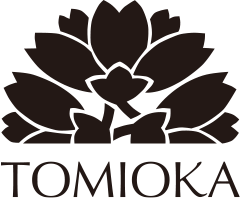About Kabazaiku
Traditional handicraft of Kakunodate, Akita prefecture "Kaba-zaiku"

Cherry bark is the bark of wild wild cherry trees.
At the end of the 18th century, the Satake Kita family brought the technique to Kakunodate from the Ani region in northern Akita Prefecture. Kakunodate's "Kaba-zaiku" is written as "Kaba-zaiku" or "Cherry bark work".
Traditionally, it was written as "Kaba-zaiku", but because it is easy to misunderstand that it is a product using "white birch" bark from the character "Kaba", the notation "Cherry bark work" is also used.
In ancient times, the bark of cherry blossoms (so-called ``cherry bark'') was called ``crab'', and you can see things that use the bark of wild cherry trees in items such as brushes, bows, and sword scabbards, as well as in Shosoin treasures. .
It is said that Hikoroku Fujimura, a samurai of the Northern House of the Satake family, learned the crafting technique using wild cherry bark that was handed down in the Ani region in the northern part of Akita Prefecture in the middle of the Edo period.
Artifacts from the feudal period include inro, eyeglass cases, and torans.
In the Meiji period, samurai who had lost their stipends started working on kaba-zaiku, which was originally a side job, as their main business, developing new products and gradually opening up the market as products through wholesalers. It is also exhibited at the central exposition as a special product of the prefecture.
From Kogei Hyakutweli, "Kaba-zaiku Craft Road" Soetsu Yanagi (published December 15, 1942)
Muneyoshi Yanagi, a pioneer of the modern folk art movement, evaluates it from an international perspective, saying, "It is a unique Japanese thing that uses cherry blossoms, a Japanese tree, as the skin.''

Cherry blossoms are famous for their flowers.
Even children know the waka poems that have been compared to Yamato-shin.
And how the Sun family would have loved it as a subject for the Sun.
Patterns were also widely accepted.
As a wood, it has a sharp eye, so it is especially loved by woodblocks, and carvers love to put their swords on it. The furniture has a nice luster.
However, kaba-zaiku is crafted from mountain cherry bark.
The special properties of cherry bark have led to this craft.
I think it is a very valuable material in three respects.
One is cherry bark, which has beautiful colors.
It has a deep reddish-purple color.
The second is its luster.
When polished, the luster of the skin shines like lacquer.
The third is toughness.
It is easy to tear horizontally, but it is very strong vertically and cannot be torn with ordinary force.
These three traits have come together to lure kaba-zaiku ware to unique work.
Here we can see how this work has been favored by God from the beginning.
There are few things that show the power and beauty of natural materials so thoroughly.
This tells us how this workmanship stands on a safe and inevitable path as a work of art.
This is because saying that craftsmanship is based on materials can be said to be the first promise of craftsmanship.
It must be said that kaba-zaiku is a work of art made from extremely superior materials.
Here is the strength of kaba-zaiku that cannot be moved.
Therefore, the skills and techniques that are invited to this work depend on how well the heavenly materials are made to shine.
This is especially true of birch bark, though this is not the only kind of craft.
This is because the beauty of the material is conspicuous and remarkable.
Kaba-zaiku is a product that basks in the blessings of nature.
